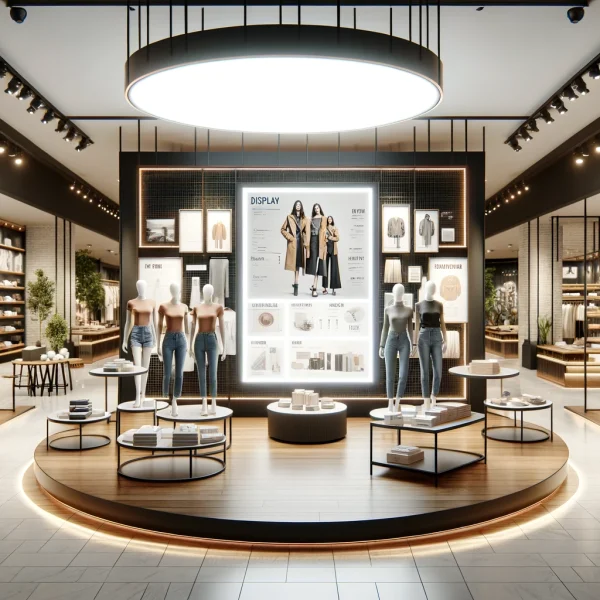Beginning with Idea to Completion: A Commercial Fit Out Process
The process of transforming a commercial space from a simple concept to a fully operational store is both thrilling and challenging. A successful retail fit-out not only enhances the aesthetic appeal of your business but also plays a crucial role in shaping customer experiences and driving sales. With the right approach, a meticulously planned fit-out can create an inviting atmosphere that invites shoppers to linger longer in your store and eventually boosts your bottom line.
In this comprehensive guide, we will explore the intricacies of retail fit-outs, exploring everything from design and planning to financial planning and project management. Whether you are launching a new venture, going through a renovation, or looking to revitalize an existing space, understanding the fit-out process is crucial for creating a store that resonates with your target audience. Join us as we walk through the steps involved in a successful retail fit-out and discover the trends and fresh ideas that are shaping the future of retail environments.

Comprehending Retail Fit-Outs
Retail fit-outs refer to the process of transforming a empty space into a completely operational retail space that fulfills the particular needs of a brand. This process begins with the initial concept, where brand owners and designers partner to envision how the space will not only look but also operate. It covers everything from the layout and design to the selection of materials and fixtures. An effective retail fit-out is essential for ensuring that the brand message is communicated clearly and that customers experience invited and engaged.
The significance of retail fit-outs extends beyond aesthetics. A thoughtfully constructed fit-out can considerably enhance the customer experience, allowing for easy navigation and product visibility. By considerately thinking about aspects such as store layout, lighting design, and the incorporation of branding elements, retailers can create immersive shopping environments that foster customer engagement and repeat visits. This calculated approach directly links with increased sales and brand loyalty.
In today's competitive market, keeping up with retail fit-out trends is essential. Businesses must adjust to changing consumer preferences, emerging technologies, and sustainability practices to stay competitive. Innovations in design and the implementation of smart technology can result in unique customer experiences that set a store apart from its competitors. Comprehending look at this website and trends within retail fit-outs can enable businesses to create spaces that not only draw in customers but also embody the brand's identity and values.
A Retail Fitting Procedure
The retail fit-out procedure is a critical stage that converts a conceptual design into a operational retail space. It begins with comprehensive planning and design, where businesses focus on their goals, target market, and brand identity to create a template that resonates with customers. Engaging with qualified designers ensures that every element, from layout to fixtures, is intentional and optimized to enhance shopper flow and experience.
Once the design is completed, it's time to proceed into building and installation. This phase typically involves working with builders and suppliers to bring the concept to life. Effective project management is essential during this stage to ensure that deadlines are adhered to and that any foreseen issues are addressed promptly. Coordination between all stakeholders involved plays a critical role in sustaining momentum and keeping the initiative within financial constraints.
After building, the next stage involves styling and merchandising the space. This is where the brand's character is brought to life through branding, illumination, color schemes, and product displays. An engaging store setting not only attracts customers but also motivates them to explore more, leading to increased sales. Properly executing this last step is essential to creating a welcoming atmosphere that encourages shoppers to return.
Eco-friendliness and Innovation in Retail Spaces
In recent years, sustainability has become a vital aspect of retail fit-outs, driven by both customer expectations and regulatory pressures. Retailers are increasingly looking for sustainable materials and processes that reduce their carbon footprint. Eco-conscious designs, such as using recycled materials, energy-efficient lighting, and low-VOC paints, not only contribute to nature conservation but also resonate with shoppers who value sustainability in their purchasing decisions.
Innovation plays a critical role in modern retail fit-outs, with tech advancements becoming a significant driver of transformation. Smart technology solutions, such as IoT-enabled devices for inventory management and automated lighting systems, can enhance productivity and consumer interaction. These advancements allow retailers to create vibrant and interactive environments, making the shopping experience more enjoyable while optimizing business expenses. Staying at the forefront with creative fit-out strategies can differentiate a retail brand in today's competitive market.
As green initiatives and novelty converge, businesses have the opportunity to create fit-outs that align with their brand values while meeting the needs of today's environmentally aware consumers. By investing in sustainable tech and prioritizing eco-friendly methods, retailers can not only secure the future of their spaces but also build lasting relationships with customers who appreciate their commitment to the environment. This strategy not only enhances the shopping environment but also positions the brand as a leader in green commerce.